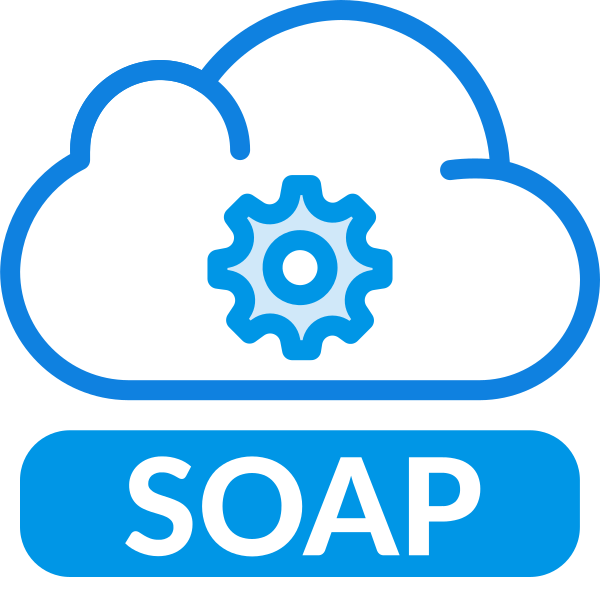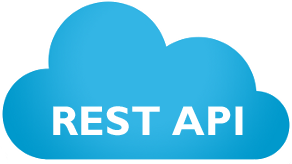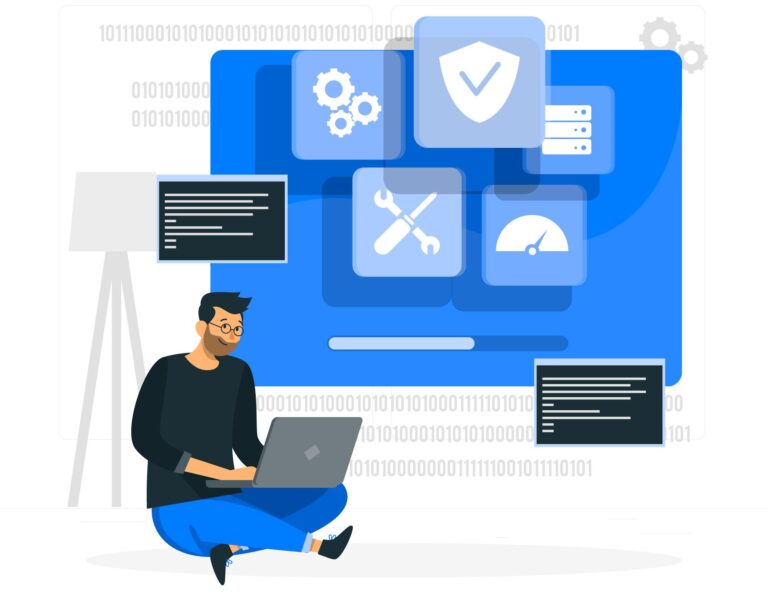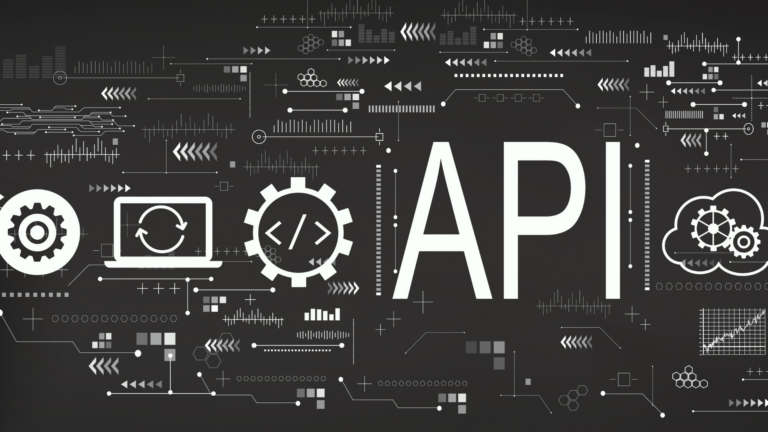In the world of web development and software integration, Application Programming Interfaces (APIs) play a vital role in facilitating this communication. This article will explore three popular types of APIs: SOAP, REST, and GraphQL. We’ll delve into their characteristics, use cases, and real-world examples to help you understand which type may best fit your specific needs.

Article Outline
Importance of APIs
SOAP (Simple Object Access Protocol)
- Definition and purpose
- Characteristics and features
- Pros and cons
- Best for: Enterprise-level applications
- Real-world example: Integration of legacy systems
REST (Representational State Transfer)
- Definition and purpose
- Characteristics and features
- Pros and cons
- Best for: Web-based applications
- Real-world example: Social media platforms
- Definition and purpose
- Characteristics and features
- Pros and cons
- Best for: Complex and dynamic data requirements
- Real-world example: E-commerce platforms
Comparing SOAP, REST, and GraphQL
- Performance and efficiency
- Scalability and flexibility
- Ease of use and developer experience
- Best practices and considerations
Importance of APIs
APIs have become a fundamental part of modern software development due to their numerous benefits. They enhance code reusability, simplify integration between systems, promote modularity, and enable third-party developers to extend the functionality of existing applications through APIs. APIs also play a significant role in enabling the creation of ecosystems and platforms where developers can build upon existing services and products.
SOAP (Simple Object Access Protocol)
SOAP, an abbreviation for Simple Object Access Protocol, is a messaging protocol used for exchanging structured information in web services. It follows a strict set of standards and specifications, making it a reliable choice for enterprise-level applications that require strong data integrity and security.

Definition and purpose
SOAP is a protocol that defines a set of rules for structuring messages and conducting communication between web services. It is based on XML (eXtensible Markup Language) and utilizes HTTP or other transport protocols to transmit messages over networks.
Characteristics and features
SOAP has several notable characteristics, such as its reliance on XML for message formatting, support for complex data types, and built-in error-handling mechanisms. It also provides extensive support for security, reliable messaging, and transaction processing.
Pros and cons
SOAP’s strengths lie in its reliability, extensibility, and strong security features. However, its strict specifications can make it more complex to implement and maintain compared to other API types. Additionally, SOAP messages tend to be larger in size due to the XML format, which can impact performance in certain scenarios.
Best for: Enterprise-level applications
SOAP is commonly used in enterprise-level applications where security and data integrity are of utmost importance. Industries such as finance, healthcare, and government often rely on SOAP for their mission-critical systems that handle sensitive data and require strict compliance.
Real-world example: Integration of legacy systems
Consider a scenario where a large financial institution needs to integrate multiple legacy systems for seamless data exchange. SOAP can be a suitable choice in this case due to its support for complex data structures and strong security measures. It allows the institution to establish reliable and secure communication channels between disparate systems while maintaining data integrity.
REST (Representational State Transfer)

REST, short for Representational State Transfer, is an architectural style for designing networked applications. It emphasizes simplicity, scalability, and the use of standard HTTP protocols for communication.
Definition and purpose
REST is an architectural style that focuses on resource-based interactions and leverages the existing protocols and semantics of the World Wide Web. It allows systems to communicate over standard HTTP methods such as GET, POST, PUT, and DELETE.
Characteristics and features
RESTful APIs are characterized by their stateless nature, meaning each request is independent and does not rely on any previous interaction. They utilize HTTP verbs to perform actions on resources and often return data in widely supported formats such as JSON (JavaScript Object Notation) or XML.
Pros and cons
REST offers simplicity and ease of implementation, making it a popular choice for web-based applications. It leverages the existing infrastructure of the web, making it highly scalable and interoperable. However, REST lacks a standardized messaging format, which can result in inconsistent data structures across different endpoints.
Best for: Web-based applications
RESTful APIs are well-suited for web-based applications, including websites and mobile apps that interact with servers over HTTP. Their simplicity and compatibility with existing web technologies make them a flexible choice for developers working in these domains.
Real-world example: Social media platforms
Consider the case of a social media platform that provides access to user profiles and allows posting updates. RESTful APIs can power the interactions between the platform’s frontend and backend systems. Users can retrieve profile information using GET requests, post updates using POST requests, and delete content using DELETE requests. RESTful APIs enable seamless communication between the client-side application and the server, facilitating a smooth user experience.
GraphQL

GraphQL is a query language and runtime for APIs that enables clients to request and retrieve precisely the data they need. It provides a flexible and efficient alternative to traditional RESTful APIs, especially for applications with complex and dynamic data requirements.
Definition and purpose
GraphQL is both a query language and a runtime. It allows clients to define the structure of the data they need, and the server responds with exactly that data. This approach reduces over-fetching and under-fetching of data, improving efficiency.
Characteristics and features
GraphQL offers a powerful and intuitive syntax for querying data. Clients can specify the fields they want to retrieve, traverse relationships between entities, and even perform aggregations and mutations. The server then processes the query and returns a JSON response with the requested data.
Pros and cons
GraphQL’s most significant advantage lies in its flexibility and efficiency. Clients can retrieve precisely the data they need, avoiding the problem of over-fetching or under-fetching data common in RESTful APIs. However, implementing GraphQL requires additional backend infrastructure and expertise, and it may not be the ideal choice for simple API scenarios.
Best for: Complex and dynamic data requirements
GraphQL shines in scenarios where applications have complex data requirements or need to handle real-time data updates. It empowers clients to request only the data they need, reducing unnecessary data transfer and improving performance.
Real-world example: E-commerce platforms
Imagine an e-commerce platform with a vast catalogue of products, each with various attributes and associations. With GraphQL, the client can precisely define the fields and relationships it needs to display a product listing page. This ensures that the client receives the necessary data efficiently without excessive data transfer or multiple requests. The flexibility of GraphQL makes it an excellent choice for such dynamic and data-intensive scenarios.
Comparing SOAP, REST, and GraphQL
Now that we’ve explored each API type individually, let’s compare them based on various factors to help you make an informed decision.
Performance and efficiency
When it comes to performance, REST and GraphQL generally outperform SOAP due to their lightweight nature. RESTful APIs, in particular, benefit from their reliance on the well-established HTTP protocol, enabling efficient data transfer. GraphQL, on the other hand, optimizes data transfer by allowing clients to request precisely the data they need, reducing network overhead.
Scalability and flexibility
REST and GraphQL both excel in terms of scalability and flexibility. RESTful APIs leverage the scalable nature of the web, allowing systems to handle high loads by distributing resources across multiple servers. GraphQL offers unparalleled flexibility, as clients can tailor their queries to retrieve precisely the data they require, adapting to changing requirements easily.
Ease of use and developer experience
In terms of ease of use, REST takes the lead. Its simplicity and familiarity with HTTP methods make implementing and consuming straightforwardly. SOAP and GraphQL require additional knowledge and tooling, making them more complex but also more powerful in certain scenarios. Developer experience may vary depending on the use case and the specific requirements of the project.
Best practices and considerations
Regardless of the API type you choose, certain best practices should be followed. These include versioning your APIs to ensure backward compatibility, implementing proper authentication and authorization mechanisms, and designing consistent and intuitive resource naming conventions. Additionally, understanding your specific requirements and the characteristics of each API type is crucial in making an informed decision.
In the realm of APIs, SOAP, REST, and GraphQL each offer distinct advantages and cater to different use cases. SOAP shines in enterprise-level applications where security and data integrity are paramount, while RESTful APIs are well-suited for web-based applications due to their simplicity and scalability. GraphQL, with its flexibility and efficiency, addresses the needs of applications with complex and dynamic data requirements. By understanding the characteristics and features of each API type, you can select the best fit for your project and unlock the potential of seamless data exchange and integration.
Frequently Asked Questions (FAQs)
Q: Can I use multiple API types within the same project?
A: Yes, it is possible to use multiple API types within the same project. Depending on your project’s requirements, you may find that a combination of SOAP, REST, and GraphQL APIs offers the best solution for different parts of your application.
Q: Are SOAP APIs still relevant in modern web development?
A: While REST and GraphQL have gained significant popularity, SOAP APIs still play a crucial role in certain industries and enterprise-level applications that prioritize security and compliance.
Q: Is it necessary to have extensive knowledge of XML to work with SOAP APIs?
A: Having a good understanding of XML can be beneficial when working with SOAP APIs, as XML is the primary data format used. However, many programming languages and frameworks provide libraries and tools that simplify the handling of XML.
Q: Can GraphQL replace REST entirely?
A: While GraphQL offers distinct advantages over REST, it does not necessarily replace it entirely. The choice between GraphQL and REST depends on the specific requirements of your project and the trade-offs you are willing to make in terms of complexity and performance.
Q: Are there any performance implications of using GraphQL due to its flexibility?
A: The flexibility of GraphQL allows clients to request precisely the data they need, which can improve performance by reducing over-fetching. However, improper use of GraphQL, such as requesting large amounts of data in a single query, can still impact performance. It’s essential to design efficient queries and consider server-side optimizations.


